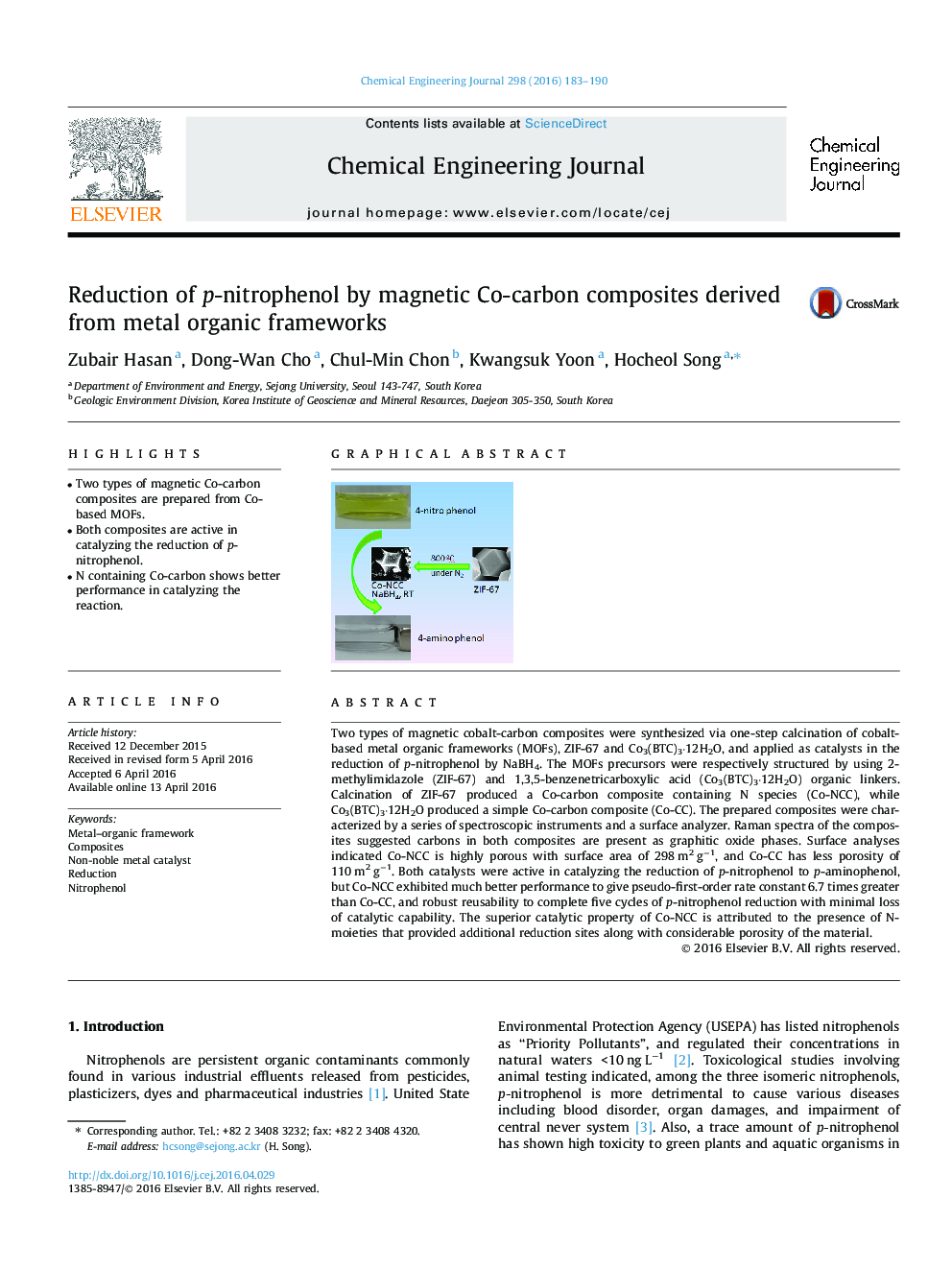| Article ID | Journal | Published Year | Pages | File Type |
|---|---|---|---|---|
| 145542 | Chemical Engineering Journal | 2016 | 8 Pages |
•Two types of magnetic Co-carbon composites are prepared from Co-based MOFs.•Both composites are active in catalyzing the reduction of p-nitrophenol.•N containing Co-carbon shows better performance in catalyzing the reaction.
Two types of magnetic cobalt-carbon composites were synthesized via one-step calcination of cobalt-based metal organic frameworks (MOFs), ZIF-67 and Co3(BTC)3·12H2O, and applied as catalysts in the reduction of p-nitrophenol by NaBH4. The MOFs precursors were respectively structured by using 2-methylimidazole (ZIF-67) and 1,3,5-benzenetricarboxylic acid (Co3(BTC)3·12H2O) organic linkers. Calcination of ZIF-67 produced a Co-carbon composite containing N species (Co-NCC), while Co3(BTC)3·12H2O produced a simple Co-carbon composite (Co-CC). The prepared composites were characterized by a series of spectroscopic instruments and a surface analyzer. Raman spectra of the composites suggested carbons in both composites are present as graphitic oxide phases. Surface analyses indicated Co-NCC is highly porous with surface area of 298 m2 g−1, and Co-CC has less porosity of 110 m2 g−1. Both catalysts were active in catalyzing the reduction of p-nitrophenol to p-aminophenol, but Co-NCC exhibited much better performance to give pseudo-first-order rate constant 6.7 times greater than Co-CC, and robust reusability to complete five cycles of p-nitrophenol reduction with minimal loss of catalytic capability. The superior catalytic property of Co-NCC is attributed to the presence of N-moieties that provided additional reduction sites along with considerable porosity of the material.
Graphical abstractFigure optionsDownload full-size imageDownload as PowerPoint slide
